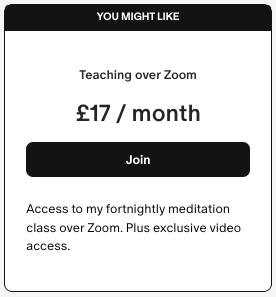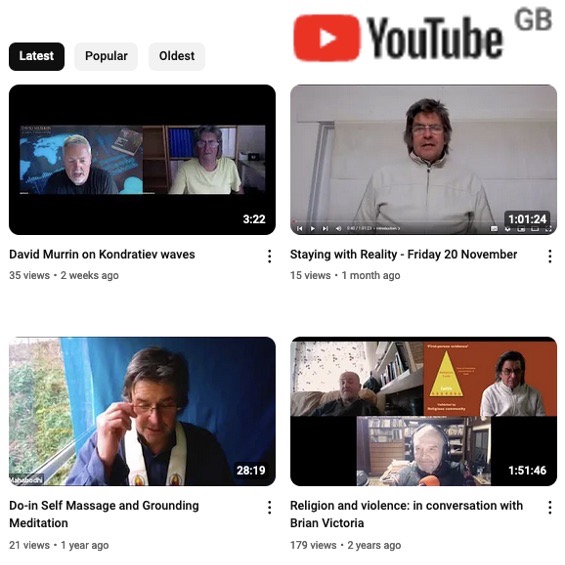Buddhists in Silicon Valley
Below is an excerpt from my forthcoming book… © Mahabodhi Burton 12 minute read Check out this fascinating 7-minute excerpt from the chapter ‘Transhumanism and Alienation,’ which explores the connection between Buddhism and Silicon Valley, including the concepts of ‘Buddhism-lite’ and Wisdom 2.0. Are you concerned about the dilution of Buddhism in a secular context? This excerpt is a must-read. Buddhists in Silicon Valley Emma Grey Ellis, in her WIRED review[1] of Dan Zigmond’s book Buddha’s Office–Dan is a Facebook (and Microsoft, Instagram, YouTube, and Google) alum, data analyst and Zen priest[2]–spells out the strong connection between Buddhism and Silicon Valley. ‘In Silicon Valley, you are always an iPhone’s throw from a Buddhist. Some of them will have arrived at their Buddhism the usual way—family, culture—but a fair few will have adopted it later in life, as a piece of their adult identity. Even if they’re not checking the “Buddhist” box on the census, you’ll know them by their Zen meditation retreats, their references to ‘the Middle Way’, their wealth … of Steve Jobs trivia. Did you know that Steve Jobs was a Buddhist who studied under Zen priest Kobun Chino Otogawa and once wandered India in search of a guru? Did you know Jobs swiped Apple’s famous “Think different” slogan from the Dalai Lama? Did you know Buddhism and tech companies have a grand historical ‘synergy’?[3] When I moved to California from the East Coast, I did not. After living and working in San Francisco for a few years, I see Buddha everywhere.’ Wisdom 2.0 ‘Every February or thereabouts, representatives from tech companies like Google, Facebook, Twitter and PayPal gather in San Francisco for Wisdom 2.0, a conference that aims to unite mindfulness with technology.’[4] ‘Over the course of several days, high-profile digerati interact with spiritual luminaries like Eckhart Tolle, Jon Kabat-Zinn and Joan Halifax, to explore topics such as ‘mindful management,’ ‘conscious leadership,’ and ‘wisdom in the workplace’ through speeches, dialogues, and group sessions.’[5] In a 2014 article called The selective awareness of Wisdom 2.0, Darrin Drda asks whether in taking an ancient practice, removing it from its context, stripping away its ethical imperatives and selling it for a profit, ‘Is the goal of the corporate mindfulness movement to comfort the already comfortable?’[6] By 2001, Slavoj Zizek had already pointed out a link between Western Buddhism and late capitalism: ‘Marxist philosopher Slavoj Yizek has long argued that “Western Buddhism,” as he calls it, is an ideal palliative for the stresses of life under late capitalism—their “perfect ideological supplement.” ‘“It enables you to fully participate in the frantic pace of the capitalist game,” Žižek explains in a 2001 essay...
Secular Religion
Below is an excerpt from my forthcoming book… © Mahabodhi Burton 9 minute read Diving into Chapter 1, ‘The Evidence Bases of Religion, Politics and Science,’ this excerpt goes into the way that secularity can foster its own religion: including, according to Professor of Religious Studies Jeff Wilson, the modern mindfulness movement. The secular myth The word ‘secular’ simply means ‘of the age:’ today this means ‘aligned with the Western paradigm of scientific materialism.’ The myth of Science holds that, in an age of technological advancement, it might be possible for man—if only he could perfect science–to exercise complete dominion over his environment, thus creating an ideal materialist society. Imagination from this perspective can be seen as a subjective sideshow, emotion-based therefore unreliable, for ’dreamy idlers’ who, incapable of meeting the demands of a materialistic society, opt for alternative lifestyles such as those rooted in religion or the arts, as a means of escape. Along the former lines, Christopher Hitchens wrote in his memoir, Hitch-22: ‘I try to deny myself any illusions or delusions, and I think that this perhaps entitles me to try and deny the same to others, at least as long as they refuse to keep their fantasies to themselves.’ This view is bolstered by the belief that no life continues after death: a perspective criticized by the Buddha as speculative overreach[1] (and perhaps emanating from a disdain for current existence:) thus individuals replace the transcendent with the secular, investing the latter with a sacred quality and prompting the pursuit of a materialist or socio-political agenda with a fervour akin to religious dedication. ‘Death is certain,” [Hitchens] wrote in The Portable Atheist, “replacing both the siren-song of Paradise and the dread of Hell. Life on this earth, with all its mystery and beauty and pain, is then to be lived far more intensely: we stumble and get up, we are sad, confident, insecure, feel loneliness and joy and love. There is nothing more; but I want nothing more.’[2] Hitchens articulates his personal code of ethics: ‘Beware the irrational, however seductive. Shun the “transcendent” and all who invite you to subordinate or annihilate yourself. Distrust compassion; prefer dignity for yourself and others. Don’t be afraid to be thought arrogant or selfish. Picture all experts as if they were mammals. Never be a spectator of unfairness or stupidity. Seek out argument and disputation for their own sake; the grave will supply plenty of time for silence. Suspect your own motives, and all excuses. Do not live for others any more than you would expect others to live for you.’[3] This code is akin to a religion, if we...
The Symbol
Below is an excerpt from my forthcoming book… © Mahabodhi Burton 7 minute read Diving into Chapter 1, ‘The Evidence Bases of Religion, Science and Politics,’ this excerpt explores Imagination in the Coleridgeian sense and the symbol as ‘conductor’ of Reality (Capital R.) It follows on from Kindness as a common thread amongst religions. Imagination and ‘Poetic Logic’ As religion freely applies the use of ritual and symbolism, it is important, now—in our coverage of the topic—to spend some time understanding the principles behind those; as well as introducing ourselves to the most important archetypal figures in the Buddhist pantheon. The term Industrial Revolution characterizes the period in Britain between 1760 and 1840, in which a shift took place from an agrarian economy to an industrial one. In 1816 Coleridge published the statesman’s manual[1] in which he speaks of the industrial era as suffering from ‘a general contagion of mechanic philosophy’; it being ‘the product of an unenlivened generalizing understanding’: he felt that many people—particularly the higher classes—confused the faculty of imagination with fantasy and he wanted to correct that view: to do so he coined the term esemplastic: meaning ‘to shape into one’, to describe the creative imagination: ‘The Biographia Literaria was one of Coleridge’s main critical studies in which he discusses the elements and process of writing. In this work, Coleridge establishes a criterion for good literature, making a distinction between the imagination and “fancy”. Whereas fancy rested on the mechanical and passive operations of one’s mind to accumulate and store data, imagination held a “mysterious power” to extract “hidden ideas and meaning” from such data. Thus, Coleridge argues that good literary works employ the use of the imagination and describes its power to “shape into one” and to “convey a new sense” as esemplastic. ‘He emphasizes the necessity of creating such a term as it distinguishes the imagination as extraordinary and as “it would aid the recollection of my meaning and prevent it being confounded with the usual import of the word imagination. Use of the word has been limited to describing mental processes and writing, such as “the esemplastic power of a great mind to simplify the difficult”, or “the esemplastic power of the poetic imagination”. ‘The meaning conveyed in such a sentence is the process of someone, most likely a poet, taking images, words, and emotions from a number of realms of human endeavour and thought and unifying them all into a single work. Coleridge argues that such an accomplishment requires an enormous effort of the imagination and, therefore, should be granted with its own term.’[2] As Kulananda says:...
Buddhism and Politics
Below is an excerpt from my forthcoming book… © Mahabodhi Burton 5 minute read Diving into the Preface of ‘The Buddhas and Global Governance,’ this excerpt explores the need to keep apart religion and politics. It follows on from ‘The political bias potential hill’ and the larger post ‘The Twitter Files.’ When you enter the temple, leave your politics at the door The website Apramada was founded by members of the Triratna Buddhist Order ‘to bring Buddhist perspectives to bear on questions facing the world today – a task of urgent importance in an era when public discourse is often clouded by divisive ideologies and partisan animosity.’[1] The Sanskrit term apramada means ‘carefulness, vigilance, cautiousness, steadiness.’ ‘We apply Buddhist ideas and insights to a range of issues in society, culture, politics, science, and philosophy. We also offer clear expositions of fundamental Buddhist teachings and practices, in the hope that people will be drawn to explore them further. In pursuing these ends, we strive to exemplify and promote “wise thinking” and “wise enquiry”.’[2] My colleague Ratnaguna published an article on Apramada entitled, When you enter the temple, leave your politics at the door,[3] examining the problems inherent in bringing politics into a religious context: the main objection being that doing so tends to foster divisiveness and partisanship, whereas the aim of a religion such as Buddhism is to nurture the welfare and happiness of each ‘sovereign’ individual. Cultural and Religion are ‘above Politics’ Culture and Religion can be seen to be ‘above’ Politics (these terms have been capitalized to indicate a general field.) Ratnaguna cites the literary critic Joseph Epstein, who says, ‘To be educated by novels is to believe that human actions are best understood through individual cases, and to believe, further, that every individual case is itself immensely complex.’ Epstein contends that: ‘Most great literature is indeed separable from politics… true culture is above gender, race, and class… the point of view literature teaches is inherently anti-system, anti-theory, and skeptical of all ideas that do not grow out of particular cases…’ Dangers in Ideologies Ratnaguna points to the danger of constructing ideologies: ‘Epstein is not denying the possibility of general truths about ‘human actions’, but he is saying that such truths are truer when they are intuitively recognized in concrete examples rather than constructed as abstract conceptual systems. His words also point to the danger that if we adhere strongly to such an abstract system, we might then think that we are ‘recognising’ it when we are really just superimposing it on what goes on around us.’ (My emphasis.) Ratnaguna compares this ‘ideological’ approach with that of a person who is...
The political bias potential hill
Below is an excerpt from my forthcoming book… © Mahabodhi Burton 3 minute read Diving into the Preface of ‘The Buddhas and Global Governance,’ this excerpt explores the way that going to extremes can be the way of things in politics. It follows on from ‘Compassion and its enemies’ and is part of the larger post ‘The Twitter Files.’ The Middle Way Carroll spoke of a middle way between the extremes of too much and too little compassion; in fact, the Buddha expressed his teaching as ‘the Middle Way’ between extremes: one needed to avoid the extremes of eternalism and annihilationism: that either all phenomena are underpinned by a fixed unchanging essence (eternalism,) or that nothing continues after death (annihilationism.) It is human nature to go to one extreme or another: either retrenching into dogma, in the former case; or giving up, thinking: ‘What is the point of building anything anyway: everything is going to come to an end?’ in the latter. And we not only see these tendencies in religious life, we see it everywhere: including in politics: where the harder thing is to ‘stay in the middle:’ marrying the opposites. Ricky Gervais’s ‘centrist coward’ is therefore doing the harder thing: by trying to occupy the middle ground. The ‘political bias potential hill’ This difficulty illustrated by an analogy: suppose we take a bowl and place a marble inside the edge: when we let go of the marble, under gravity it will move towards the centre, then will oscillate back and forth until it comes to rest in the middle; in physics, this shape is called a potential well. But suppose we now turn the bowl upside down and create what could be called a potential hill: this time, when we place the marble on the top of the hill, at first it will slowly move away from the centre, and then pick up speed as it accelerates down the hill. Staying in the middle ground requires effort! Those who call their mild political opponents ‘Trotsky’ or ‘Hitler’ are not really making that effort: they are taking the easy path: of polarization, and now there are many things about their opponent that they just do not have to think about. I am reminded of a passage from John Cleese and Robin Skynner ‘s book Families And How To Survive Them: ‘What’s so funny about really extreme political sects is their inability to get on with each other. They’re always splitting up and forming separate groups, which then split up after a time. We had a lot of fun with this in Monty...







 Users Today : 199
Users Today : 199 Users Yesterday : 110
Users Yesterday : 110 This Month : 839
This Month : 839 Total Users : 15996
Total Users : 15996
